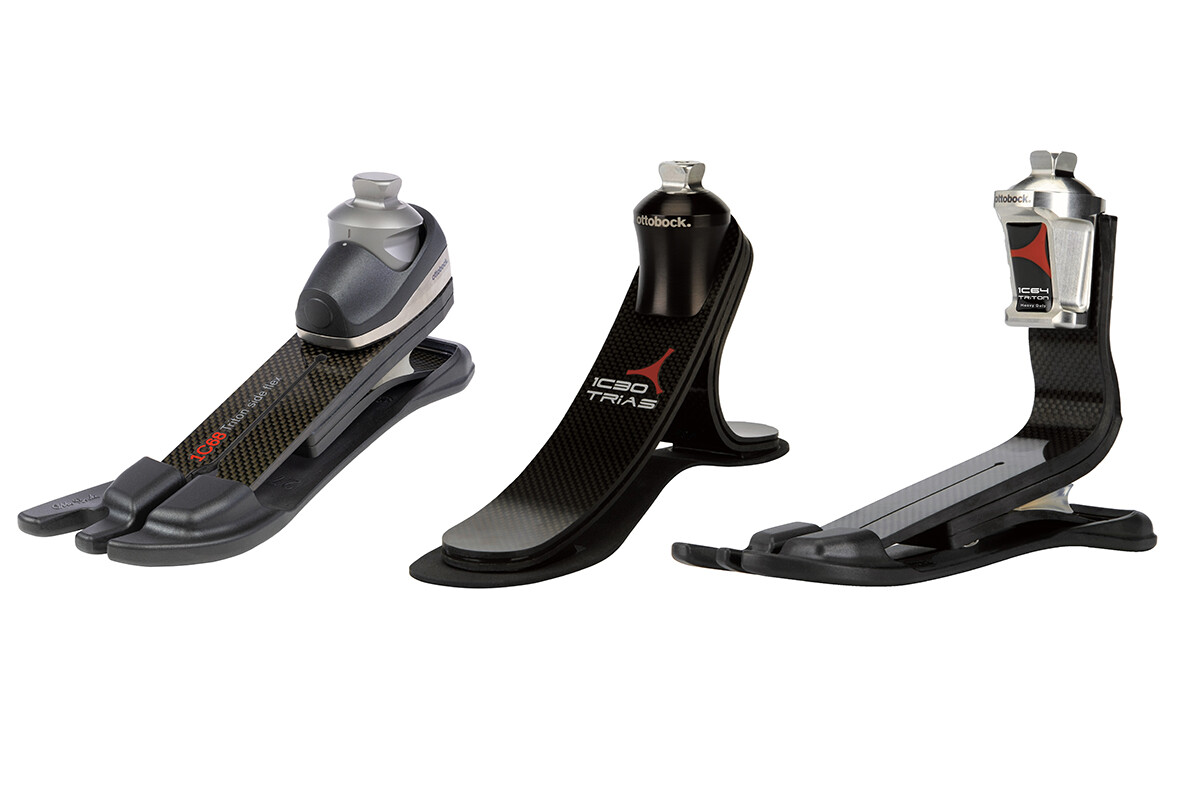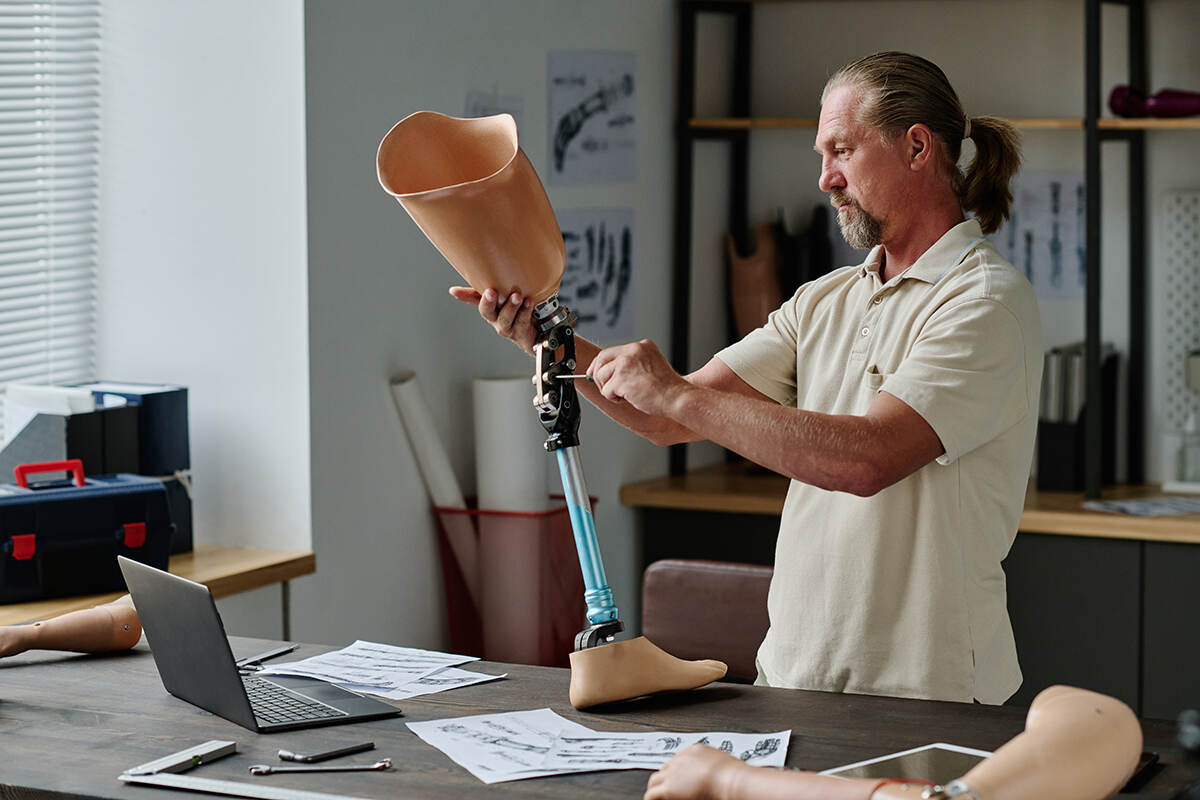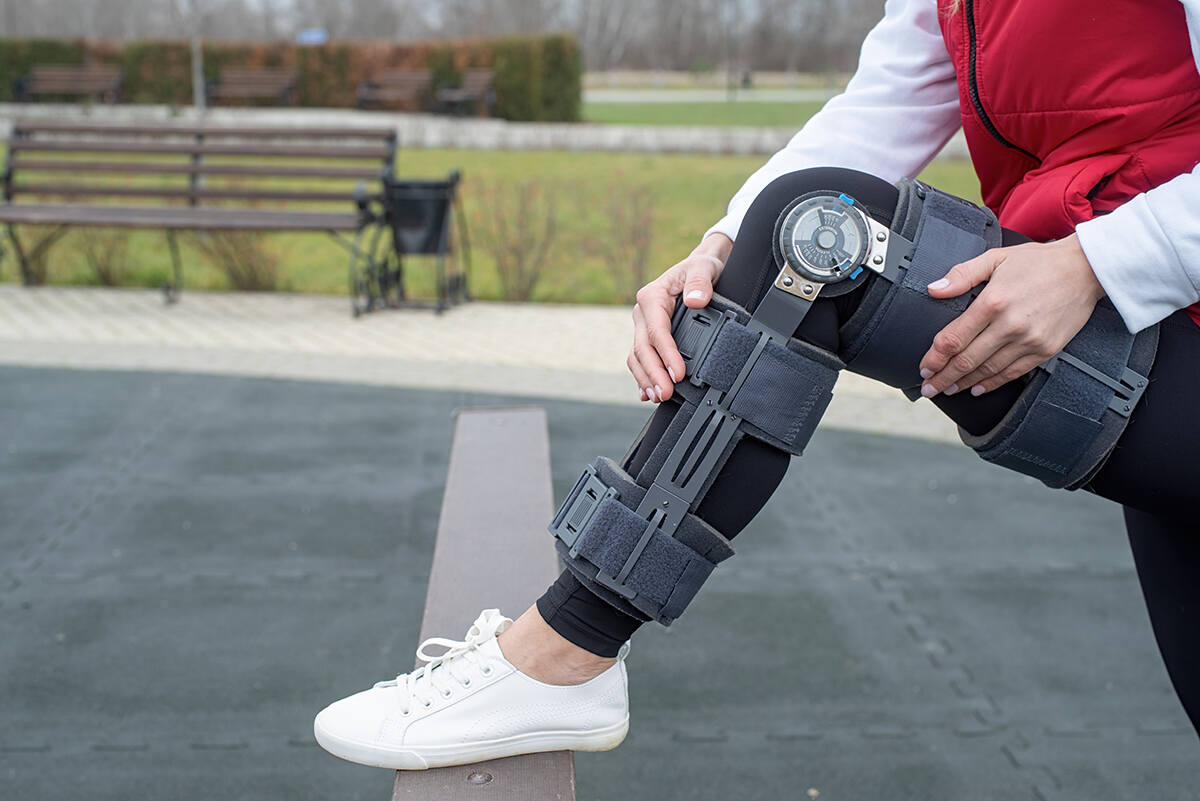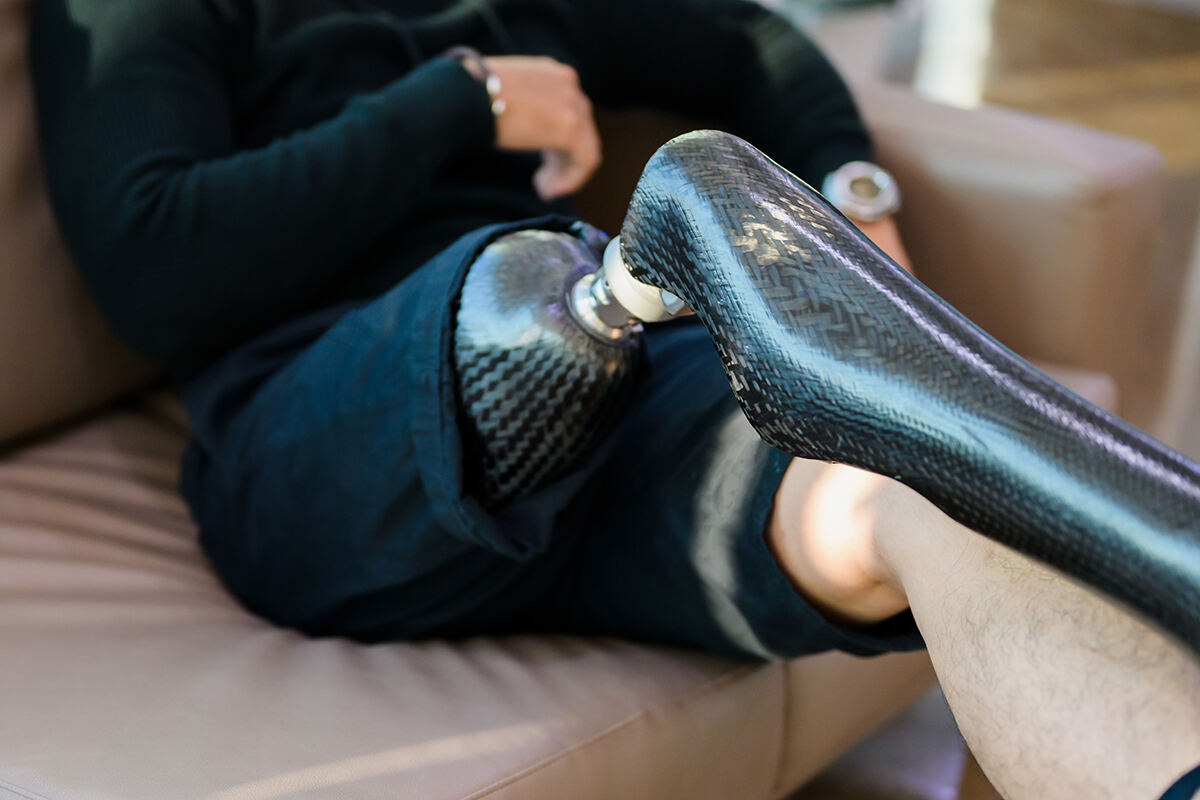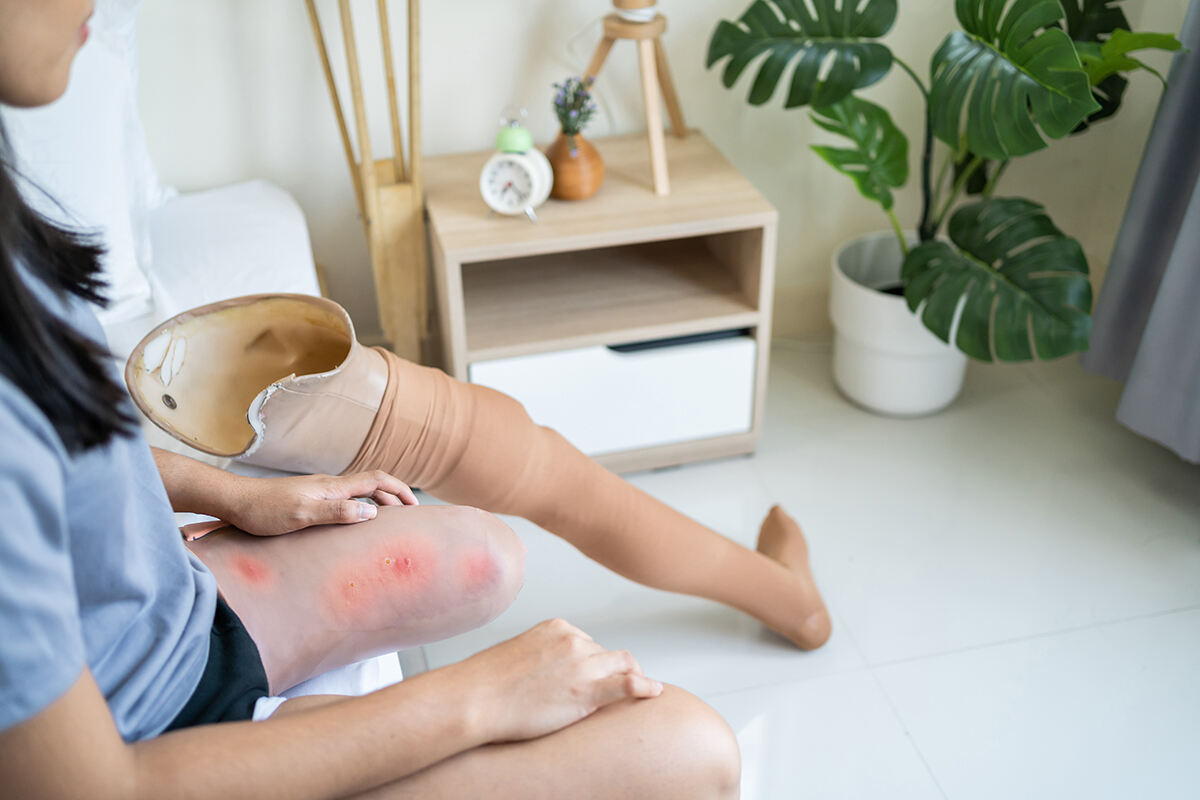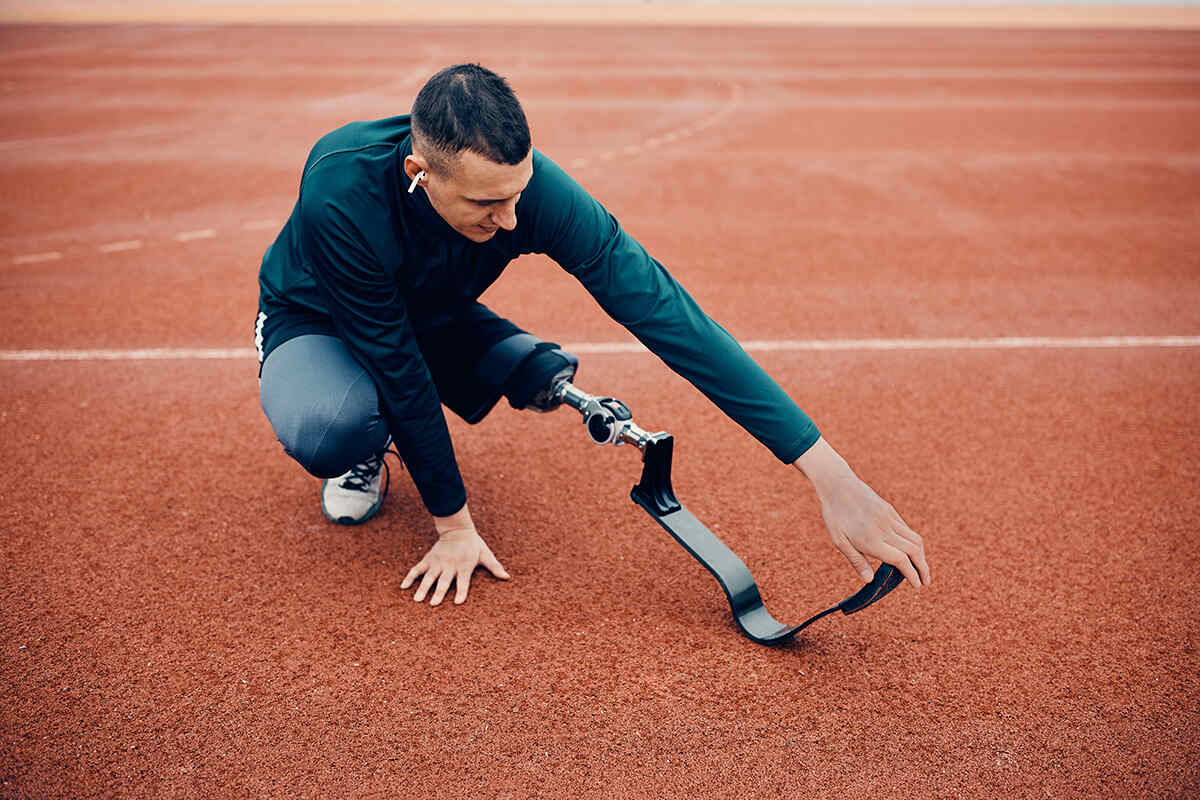Navigating the world of prosthetics can be an overwhelming experience. Adjusting to life after limb loss is challenging enough, and the quest for a comfortable and functional prosthetic socket can sometimes feel like an uphill battle. The key to achieving optimal comfort and functionality lies in understanding the different types of prosthetic sockets and their components.
In this blog post, we will delve into the various prosthetic socket designs, suspension systems, liners, and interface materials that play a crucial role in ensuring a comfortable, functional, and stable prosthetic experience. By understanding these components, amputees can make informed choices and work closely with their prosthetist to build a personalized prosthetic solution that suits their unique needs.
Key Takeaways
- This article explores the pros and cons of three main lower limb prosthetic socket designs to help amputees make informed decisions.
- Various suspension systems, liners and interface materials can be used for a secure fit with comfort, while common challenges such as skin irritation or volume fluctuations can be addressed through proper fittings.
- Collaboration with a prosthetist is key to ensure stability and adequate load transmission for optimal performance.
Exploring Prosthetic Socket Designs
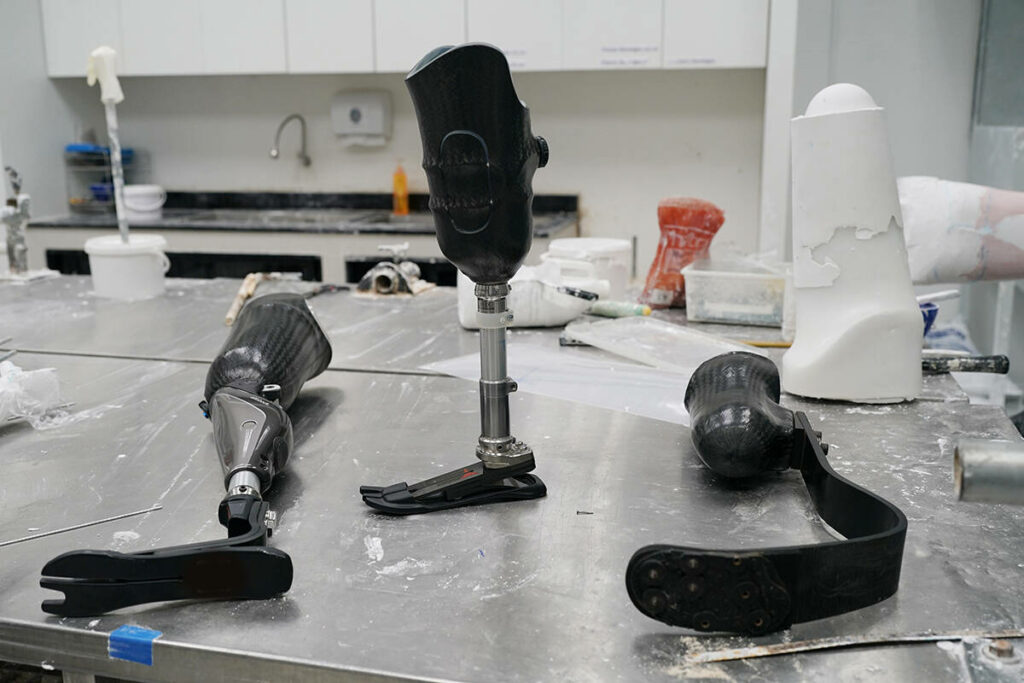
A prosthetic socket is the interface between the residual limb and the prosthesis, often including a prosthetic liner for added comfort and protection. To further enhance comfort, prosthetic socks can be utilized alongside the liner. The design of a prosthetic socket greatly contributes to the comfort and functionality for the wearer. There are three main lower limb prosthetic sockets designs: Quadrilateral, Patellar Tendon Bearing Supracondylar (PTB SC), and Total Surface Bearing (TSB) sockets, each with its unique features and benefits.
Amputees need to grasp the attributes of these socket designs to make knowledgeable choices regarding their prosthetic components. Detailed discussions on Quadrilateral, PTB SC, and TSB sockets, including their pros and cons, will assist you in determining the design most suited to your requirements.
Quadrilateral Socket
The Quadrilateral socket has its roots in the 1950s when it was developed at the University of California at Berkeley, providing a significant improvement in transfemoral prostheses by better accommodating the patient’s residual limb. This socket design comprises four sides, specifically designed to accommodate the contours of the residual limb, and is intended to provide a secure and comfortable fit.
Quadrilateral sockets are typically fabricated using advanced plastic and silicone materials. The unique design of this socket offers:
- Four-sided walls for structural support
- Even pressure distribution on the adductor muscles
- Resistance to movement of the femur
- Customization for individual gait and function
- Increased socket comfort
All of these features contribute to stability and comfort. Techniques such as the use of ischial-ramal containment (IRC) sockets can further improve socket comfort and prosthetic fit.
Patellar Tendon Bearing Supracondylar (PTB SC) Socket
The Patellar Tendon Bearing Supracondylar (PTB SC) socket is the most commonly used prosthetic socket design. This socket design focuses on applying pressure to load-tolerant areas of the limb, such as the patellar tendon, while relieving pressure from pressure-sensitive areas. The PTB SC socket is designed to provide a secure fit and reduce the pressure on the patellar tendon, making it suitable for medium to long stumps without circulation issues.
However, the PTB SC socket has its drawbacks. It has higher energy requirements than other socket designs and may cause discomfort or pressure on the patellar tendon. To address these issues, a prosthetist may use a check socket, a transparent socket that allows them to observe any pressure points or inflammation, to evaluate the fit of a socket PTB SC before finalizing the prosthetic design.
Total Surface Bearing (TSB) Socket
The Total Surface Bearing (TSB) socket is designed to fit the contours of the residual limb and provide a secure fit, while evenly distributing the weight of the prosthesis across the entire surface of the socket. TSB sockets are fabricated using a variety of materials, such as:
- laminated woven materials
- acrylic resins
- molded thermoplastic sheets
- elastomeric (gel) liners
One of the major advantages of TSB sockets is the improved socket fit and prevention of detrimental pressure points. The use of a silicon/gel liner in TSB sockets ensures even weight distribution on the residual limb, reducing the risk of pressure points or discomfort. Thicker liners can further promote even weight distribution on the residual limb.
The TSB socket’s design enhances comfort and stability for the wearer, making it an excellent choice for many amputees.
Suspension Systems and Socket Fit
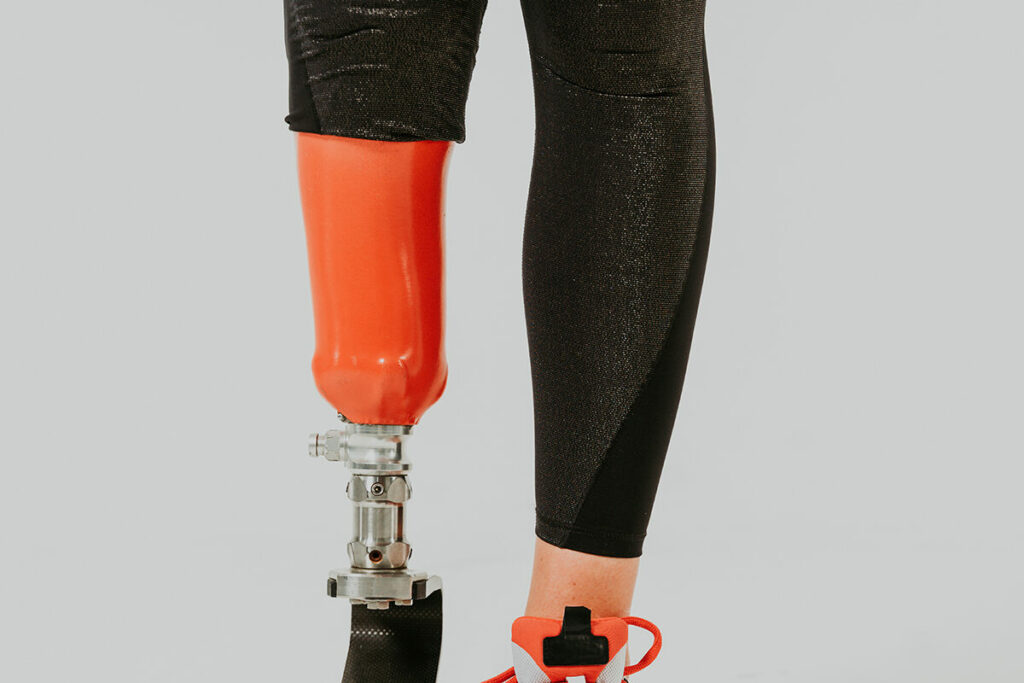
Suspension systems have a significant impact on socket fit, confirming a secure fit of the residual limb within the socket while offering stability and comfort for the user. Suspension systems help to evenly distribute forces and pressures on the residual limb, thus reducing the risk of discomfort, skin breakdown, and injury. Several suspension systems are available for prosthetic sockets, including suction suspension, locking pins and lanyard suspension, and adjustable systems like the RevoFit socket.
Each suspension system has its advantages and drawbacks, and the choice of suspension system depends on factors such as the wearer’s activity level, residual limb shape, and personal preference. The ensuing sections will provide discussions on various suspension options and their influence on socket fit, stability, and comfort, aiding your decision-making process regarding your prosthetic suspension system.
Suction Suspension
Suction suspension systems operate by generating negative pressure within the socket, utilizing a passive expulsion suction valve to enable air to escape and create a suction effect, which assists in securely affixing the prosthesis. The benefits of a suction suspension system include improved suspension compared to pin/lock systems, minimized pistoning effect, and the capability to maintain a vacuum seal for a secure socket fit.
However, suction suspension systems have their limitations. They may cause inadequate suspension, resulting in:
- Decreased prosthetic utilization
- Skin abrasions or blistering
- Heightened pain
- Impaired gait
Additionally, sleeves used in these systems tend to wear out after a few months, and even a pinhole leak can reduce the suction effect. To mitigate these limitations, close collaboration with a prosthetist is necessary to guarantee proper fit and functionality.
Locking Pins and Lanyard Suspension
Locking pins and lanyard suspension systems offer added security and ease of use for amputees. A locking pin suspension system employs a pin at the end of a silicone or gel-lined liner to firmly attach the prosthetic limb to the residual limb, typically for cylindrical residual limbs. A lanyard suspension system functions by securing the residual limb within the prosthetic socket using a cord or strap, maintaining it securely in place and allowing for simple donning and doffing of the prosthetic limb.
RevoFit Adjustable Socket
The RevoFit Adjustable Socket, designed and patented by Click Medical, is a prosthetic socket that allows users to convert their regular prosthetic limb into an adjustable one. The adjustable socket addresses volume fluctuations through the use of custom, movable panels tailored to specific areas of the limb. These panels can be adjusted without the need to remove clothing, making on-the-go adjustments simple.
The RevoFit Adjustable Socket:
- Equipped with a turn dial that can release tension and accommodate volume fluctuations of up to 10 ply
- Allows users to easily adjust the socket through clothing
- Provides a more comfortable and secure fit, especially for those with limited mobility or dexterity
The RevoFit Adjustable Socket is a game-changer in the world of prosthetics, offering unprecedented convenience and comfort for amputees.
Liners and Interface Materials
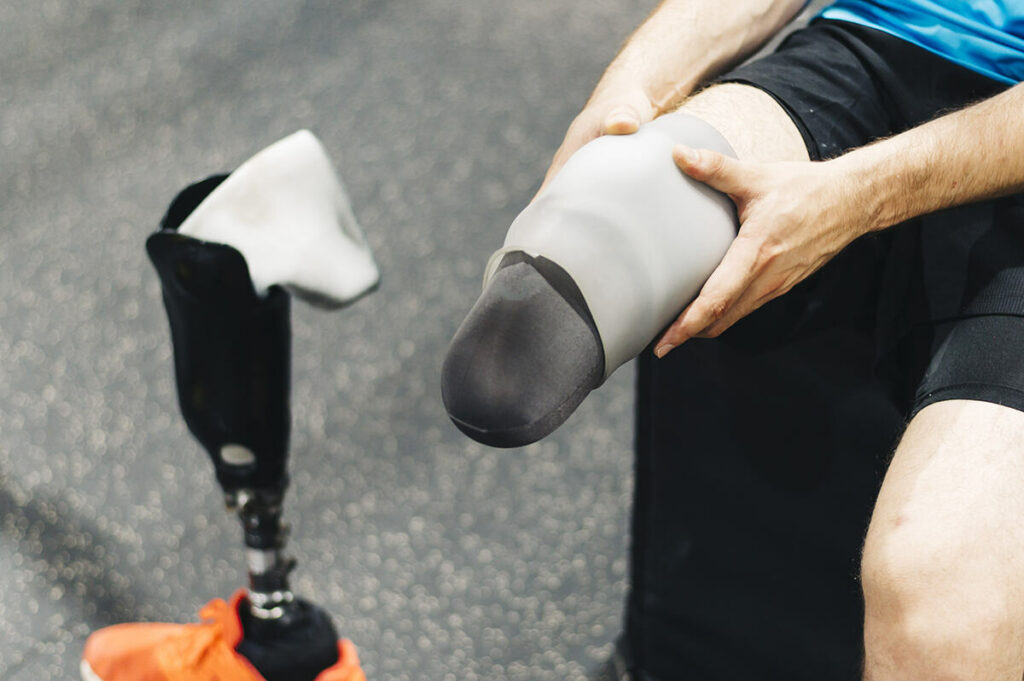
Liners and interface materials are essential components of prosthetic sockets, providing cushioning and protection for the residual limb. The choice of liner material can significantly impact the wearer’s comfort, as well as the overall functionality and longevity of the prosthesis. The three main categories of prosthetic liners are gel, silicone, and thermoplastic elastomer (TPE) liners.
The upcoming sections will cover various liner materials and their pros and cons, assisting you in making a knowledgeable choice on the liner material most appropriate for your specific needs and preferences.
Gel Liners
Gel liners offer excellent cushioning and protection for the residual limb. They are made from materials such as silicone gel, thermoplastic elastomer (TPE) gel, and urethane gel. The benefits of utilizing gel liners in prosthetics include superior protection from friction, improved compliance at the residual limb-prosthetic socket interface, and comfort for the user.
However, there are potential drawbacks of gel liners, such as:
- Limited knee range of motion in certain cases
- The need for daily maintenance for certain gel liners
- Potential for harm if not used correctly
It’s important to consult with a prosthetist to ensure the appropriate use of gel liners and maintain an optimal balance between comfort and functionality.
Silicone Liners
Silicone liners provide a balance between softness and durability, making them an excellent choice for many amputees who value comfort and require a secure fit. Silicone liners are constructed from medical-grade silicone, renowned for its firmness and durability, and are non-irritating and comfortable on the skin.
However, some users may find silicone liners less comfortable due to:
- Sweating
- Skin irritation
- Odor
- Difficulty in donning and doffing
- Limited durability
Consulting a prosthetist for bespoke advice and solutions is necessary to resolve any discomfort or issues related to silicone liners.
Thermoplastic Elastomer (TPE) Liners
Thermoplastic Elastomer (TPE) liners combine the benefits of gel and silicone liners, offering a balance of comfort, durability, and ease of use. TPE liners provide the highest comfort levels, while silicone liners offer a high level of comfort and durability for those who are more active.
TPE liners are easy to mold and shape, allowing them to be easily fitted and used with prosthetic sockets. For many amputees, TPE liners offer an ideal combination of comfort, durability, and flexibility, making them an excellent choice for a wide range of prosthetic needs.
Common Challenges and Solutions
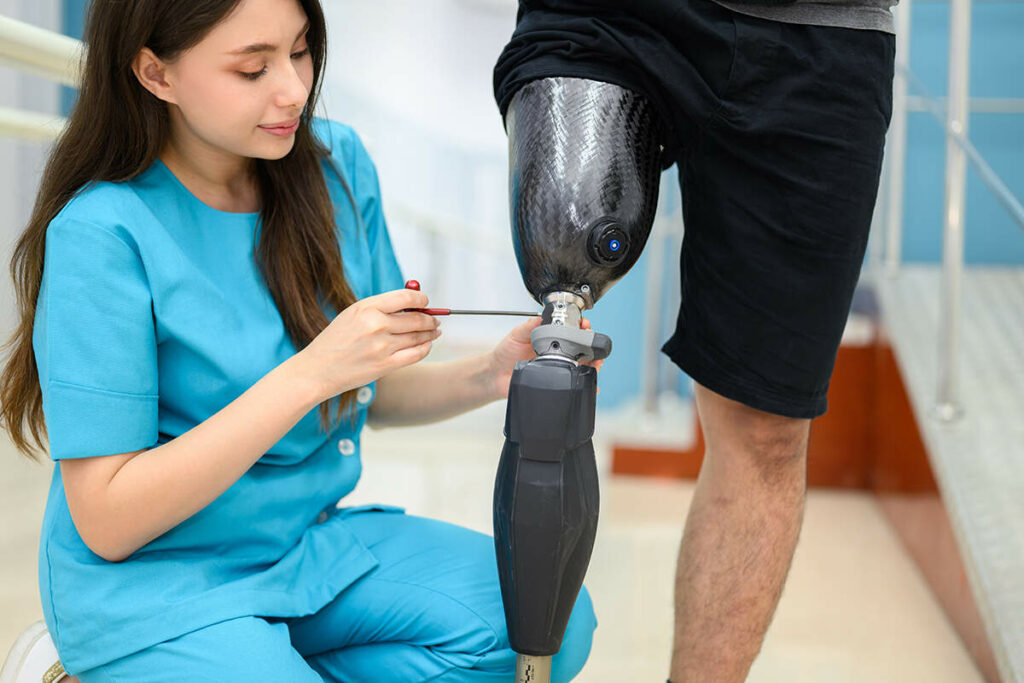
Despite advancements in prosthetic socket designs, liners, and suspension systems, amputees still face common challenges such as skin irritation, volume fluctuations, and ensuring stability. These challenges can be addressed by ensuring a proper socket fit, making regular adjustments, and working closely with a prosthetist.
The upcoming sections will delve deeper into these challenges, providing solutions and best practices to help amputees manage them and enjoy a comfortable and functional prosthetic experience.
Skin Irritation and Discomfort
Skin irritation and discomfort are common issues faced by amputees using prosthetic sockets. A poorly fitting socket can lead to skin breakdown and tissue damage, causing discomfort and long-term consequences. To prevent or minimize skin irritation and discomfort in prosthetic users, it is recommended to:
- Ensure proper alignment of the prosthesis
- Practice good hygiene and daily skin inspections
- Moisturize the skin
- Make minor prosthetic adjustments
Materials like aluminum, stainless steel, carbon, and titanium used in prosthetic sockets can also cause skin irritation and discomfort. Working closely with a prosthetist is necessary to identify the cause of skin irritation and discomfort and find the right solution, like adjusting the socket fit or changing the liner material.
Volume Fluctuations
Volume fluctuations in a patient’s residual limb can be attributed to factors such as body weight changes, fluid retention, and muscular hypertrophy or atrophy. These fluctuations can have a significant impact on the fit and comfort of prosthetic sockets, leading to decreased comfort and performance.
Prosthetic technologies like 3D scanning system and adjustable prosthetic sockets with AI technology are available to manage volume fluctuations and enhance comfort and functionality. Adjustable sockets allow users to modify the volume of the socket to accommodate changes in the residual limb size, providing a secure and comfortable fit and reducing the risk of discomfort or instability caused by volume fluctuations.
Ensuring Stability and Adequate Load Transmission
Stability and load transmission are essential factors in ensuring a comfortable and functional prosthetic experience. A secure attachment between the prosthesis and the residual limb improves the control of the prosthesis and minimizes discomfort or abrasions.
Suspension systems and socket designs play a key role in promoting stability and load transmission in prosthetics. By working closely with a prosthetist, amputees can ensure the proper fit and function of their prosthetic socket, addressing challenges related to stability and load transmission, and ultimately enjoying a more comfortable and functional experience.
Summary
In summary, understanding the various prosthetic socket designs, suspension systems, liners, and interface materials is essential for amputees to make informed choices about their prosthetic components. By working closely with a prosthetist, amputees can ensure the proper fit and function of their prosthetic socket, overcoming common challenges like skin irritation, volume fluctuations, and ensuring stability.
With knowledge and professional guidance, amputees can take control of their prosthetic journey, building a personalized prosthetic solution that suits their unique needs and preferences. The journey may not be easy, but with the right information and support, amputees can enjoy a comfortable and functional prosthetic experience, empowering them to lead fulfilling and active lives.
Frequently Asked Questions
What are the 4 types of prosthetics?
Prosthetics and artificial limbs come in four primary types: transradial, transfemoral, transtibial, and transhumeral. These distinct types vary depending on the area of use and type of support required. Other prosthetics may also be used for specific medical conditions.
What is the most comfortable prosthetic socket?
The most comfortable prosthetic socket is the one that is perfectly customized to each person.
What is the best material for prosthetic sockets?
Prosthetic sockets are best made from modern plastics and silicone materials due to their combination of comfort and functionality for the patient. Aluminum, stainless steel, carbon, and titanium can also be used in connective components.
What is the primary function of prosthetic liners?
Prosthetic liners provide cushioning and comfort, as well as protection for residual limbs to ensure an appropriate fit.
What is the role of suspension systems in prosthetic sockets?
Suspension systems are essential components of prosthetic sockets, as they ensure a secure fit and provide stability and comfort for the user.





